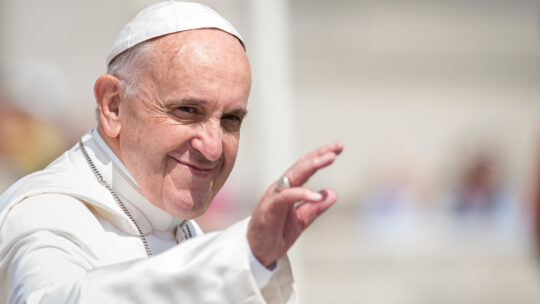
Pope Francis was known for many things including his humility, compassion and willingness to confront difficult issues. Perhaps one of his most enduring legacies is how effectively he communicated. Whether addressing global audiences, speaking to world leaders, or sharing reflections online, Pope Francis understood that communication is more than answering questions or delivering messages—it was about making people listen, remember and believe.
In an age when attention is scarce and skepticism is high, Francis’s approach offers strategic lessons for communicators everywhere.
Clarity Over Complexity
Pope Francis spoke to people across cultures, classes and belief systems. While he knew eight different languages, his true fluency was in clarity. His words, whether in encyclicals or responses to questions, were simple, consistent and grounded in truth that could be easily understood.
He avoided jargon. Instead, he used direct language that people could comprehend, and more importantly, feel.
This clarity was hardly accidental. It was strategic. In communications, if your audience doesn’t get it, they can’t act on it. Pope Francis made it a priority to remove barriers between his message and his audience.
Communicating with Purpose
People rarely remember bullet points. Instead they will remember how messages made them feel. Pope Francis helped audiences to remember his message but even more importantly, to internalize it. His messages centered on human experiences, grief, hope, injustice, love—and through his words and actions, he moved people from passive listeners to active participants in the dialogue.
Great communicators know that storytelling is a vehicle to simplify complex issues more basic and engage emotion. Whether addressing inequality or climate change, Francis wrapped his points in real, human stories that connected. For example, in 2015 he wrote the first-ever papal encyclical focused on the environment, titled “Laudato Si.” The piece serves as a call to action, recognizing climate change as a crisis, not just environmental but social, where the poor suffer the its greatest consequences.
Control the Conversation, Don’t React to It
One of the most effective communication strategies is to treat every engagement as an opportunity, not a challenge. Pope Francis rarely appeared on the defensive. Instead, he shaped the narrative. He anticipated skepticism, addressed tough topics head-on, and offered perspectives that often reframed the discussion.
He embraced controversial issues and leaned into challenging situations with care and purpose. He showed that credibility doesn’t come from saying what people want to hear. It comes from being authentic, consistent and thoughtful. People may not always agree, but solid reputations are built on consistency and authenticity.
Just a few months before his death, in February, Pope Francis wrote a letter to U.S. bishops, in regards to the potential mass deporation of immigrants planned by the current administration.
“Jesus Christ… did not live apart from the difficult experience of being expelled from his own land because of an imminent risk to his life, and from the experience of having to take refuge in a society and a culture foreign to his own,” the Pope said in his letter.
Empathy as Strategy
Pope Francis communicated like someone in constant conversation with all who listened. He spoke with audiences, not at them.
Pope Francis met people where they were emotionally, culturally and contextually. This approach strengthened his authority and his reputation. In fact, a 2024 Pew Research Center survey found that 75% of U.S. Catholics view Pope Francis favorably.
Communicators today must recognize that empathy is smart, not soft nor weak. It builds trust and earns attention. Pope Francis showed how empathy and leadership can coexist in powerful ways.
Memorable Messages Move People
Pope Francis’s words were memorable because they were meaningful. He shared ideas in a way that challenged people to live with intention. He focused on what he wanted audiences to do after hearing him, not just what he wanted them to know. That’s the hallmark of high-impact communication.
In "The Joy of the Gospel," he warned of the emptiness that comes from a life of comfort without purpose. That message stuck because it forced a deeper call to action.
Communicators are tasked with earning attention, building credibility and sparking action. Pope Francis worked to excel at all three. He demonstrated that communication is a skill and a service. One rooted in clarity, empathy and intention.
Strategic communicators may often lack the platform to speak to the world like Pope Francis. However, in every message created and delivered, we have the opportunity to inspire, connect and lead.
Dan Rene is Strategic Communications Counselor at Dan Rene Communications.
